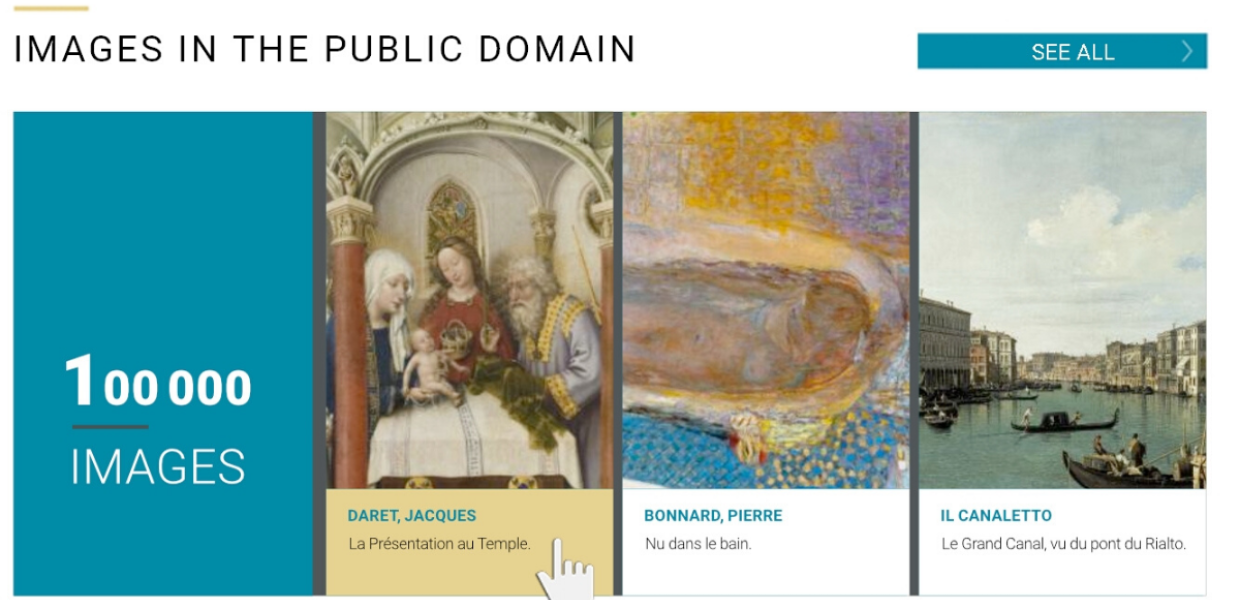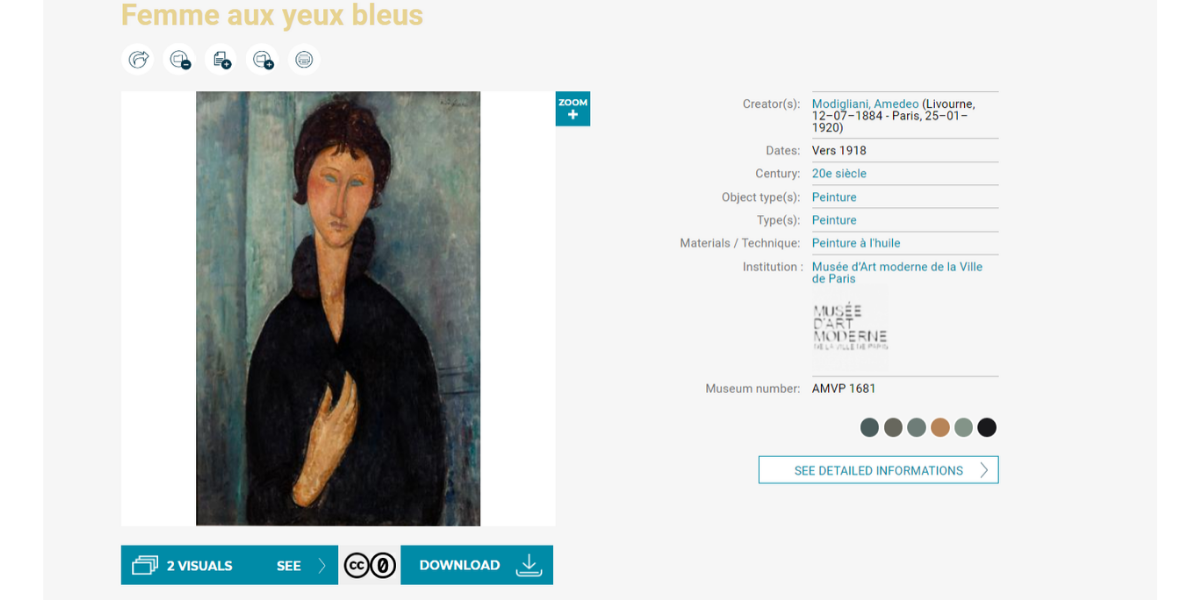How was the policy developed? Who were the key players?
Over a number of years, we worked through different scenarios that we could imagine for our images. This project team was composed of staff from departments across the organisation, including digital, collections, legal, iconographers, museum directors and so on.
Each scenario was evaluated against international benchmarks and then analysed in relation to Paris Musées in term of costs, personnel organisation, user legibility, etc. Gradually we eliminated some scenarios and focused more closely on others; we kept working to find the best scenario.
How do you evaluate the copyright status of your collections? Who’s involved?
As I stated earlier, determining the copyright status of our material is a critical step in our open access practice. We prefer to publish slowly, set by set, so we have time to fully evaluate the status of each image. This time-consuming task is done by our database manager team, in partnership with an iconographer, determining whether images are suitable for open access release.
How will you measure the impact of open access?
We will monitor the impact of our publication activities carefully. This will include web analytics, naturally, but we also want to see how we can best stimulate creativity through, for instance, hosting events in our museums to engage digital start-ups, or engaging citizens to reuse and remix our images.
Paris Musées has already participated to events such as the API Culture Day in June organised by Diane Dubray, when I presented on the different kind of API that Paris Musées uses, from calendars to collections.
Does Paris Musées have an API yet?
Paris Musées will release an API in January 2020, to coincide with the release of our first image set, supported by full documentation. At this point, I can only tell you that we decided to use GraphQL.



